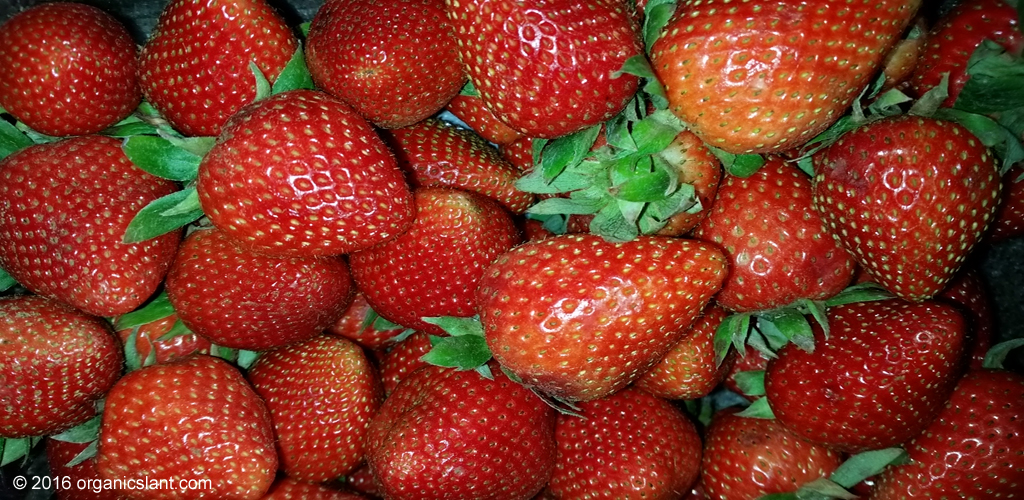Side-by-side comparisons of organic and conventional strawberry farms and their fruit found the organic farms produced more flavorful and nutritious berries while leaving the soil healthier and more genetically diverse.
“Our findings have global implications and advance what we know about the sustainability benefits of organic farming systems,” said John Reganold, Washington State University Regents professor of soil science and lead author of a paper published in the peer-reviewed online journal, PLoS ONE. “We also show you can have high quality, healthy produce without resorting to an arsenal of pesticides.”
The study is among the most comprehensive of its kind, analyzing 31 chemical and biological soil properties, soil DNA, and the taste, nutrition and quality of three strawberry varieties on more than two dozen commercial fields — 13 conventional and 13 organic.
“There is no paper in the literature that comprehensively and quantitatively compares so many indices of both food and soil quality at multiple sampling times on so many commercial farms,” said Reganold. Previous Reganold studies of “sustainability indicators” on farms in the Pacific Northwest, California, British Columbia, Australia, and New Zealand have appeared in the journals Science, Nature, and Proceedings of the National Academy of Sciences.
All the farms in the current study were in California, home to 90 percent of the nation’s strawberries and the center of an ongoing debate about the use of soil fumigants. Conventional farms in the study used the ozone-depleting methyl bromide, which is slated to be replaced by the highly toxic methyl iodide over the protests of health advocates and more than 50 Nobel laureates and members of the National Academy of Sciences. In July, California Sen. Dianne Feinstein asked the EPA to reconsider its approval of methyl iodide.
Reganold’s study team included Preston Andrews, a WSU associate professor of horticulture, and seven other experts, mostly from WSU, to form a multidisciplinary team spanning agroecology, soil science, microbial ecology, genetics, pomology, food science, sensory science, and statistics. On almost every major indicator, they found the organic fields and fruit were equal to or better than their conventional counterparts.
Among their findings:
- The organic strawberries had significantly higher antioxidant activity and concentrations of ascorbic acid and phenolic compounds.
- The organic strawberries had longer shelf life.
- The organic strawberries had more dry matter, or, “more strawberry in the strawberry.”
- Anonymous testers, working at times under red light so the fruit color would not bias them, found one variety of organic strawberries was sweeter, had better flavor, and once a white light was turned on, appearance. The testers judged the other two varieties to be similar.
The researchers also found the organic soils excelled in a variety of key chemical and biological properties, including carbon sequestration, nitrogen, microbial biomass, enzyme activities, and micronutrients.
DNA analysis found the organically managed soils had dramatically more total and unique genes and greater genetic diversity, important measures of the soil’s resilience to stress and ability to carry out essential processes.

 Organic tomato juice contains more beneficial phenolic components than juice from conventionally grown crops
Organic tomato juice contains more beneficial phenolic components than juice from conventionally grown crops Strawberries boost red blood cells, study finds
Strawberries boost red blood cells, study finds Reese’s Peanut Butter Cups Go Organic
Reese’s Peanut Butter Cups Go Organic Microplastics can be harmful to farm crops
Microplastics can be harmful to farm crops